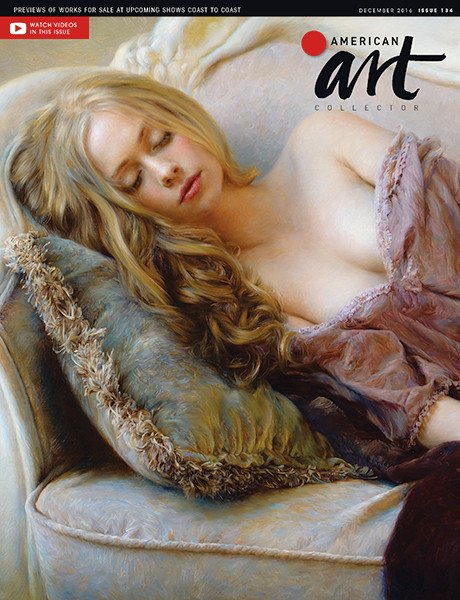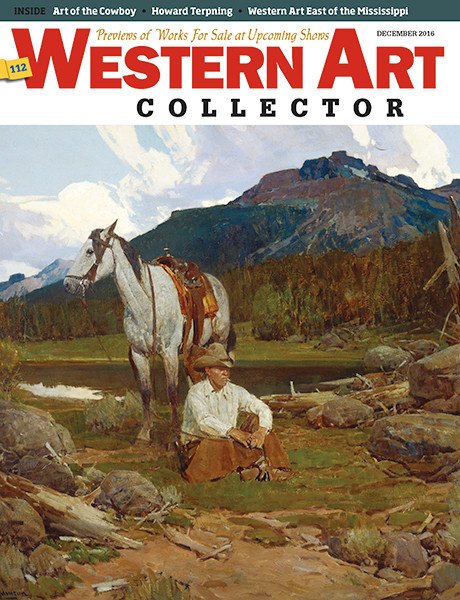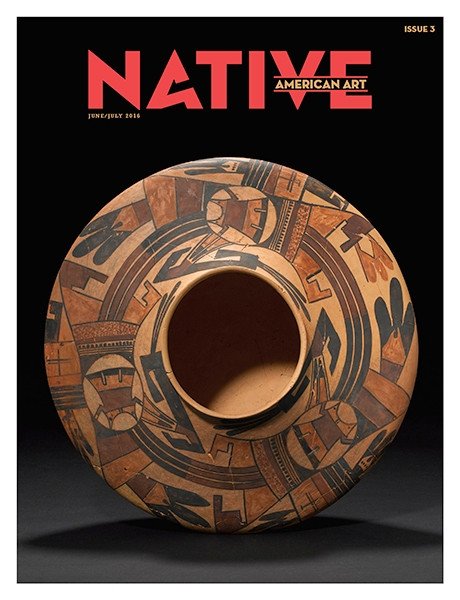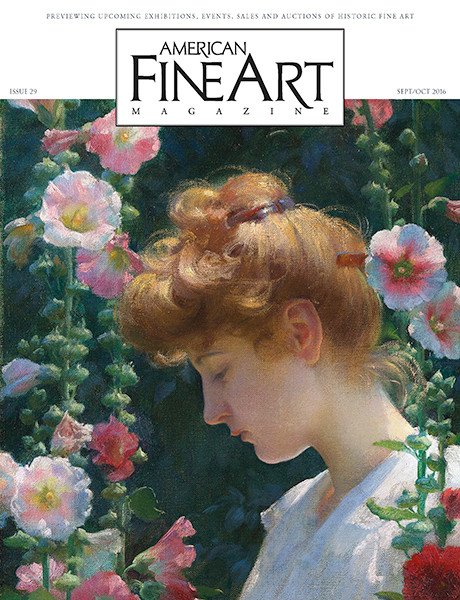Grand Prize
Grand Prize is a four-page editorial feature in American Art Collector magazine
 Wet Day on Dunbar, acrylic, 8 x 17" (20 x 43 cm)
Wet Day on Dunbar, acrylic, 8 x 17" (20 x 43 cm)
Andrew McDermott
Vancouver, Canada
Shiny Streets
“I have spent many years painting, and I have always believed in following your gut and inner voice,” says acrylic and oil painter Andrew McDermott. The artist, who hails from Canada, captures scenes of everyday life in the city—as well as a range of nature and marine scenes—all in a distinct painterly style. “Artist influences are good, but don’t try to look too hard at one artist’s methods. Find your way…spend time experimenting and messing around, and don’t be afraid to take chances,” says McDermott.
Inspiration for the artist comes from his observations walking through cities, exploring rural landscapes and studying the human figure. McDermott is particularly known for his nighttime (and often rainy) urban street scenes, which depict glowing lights and highly reflective surfaces. His winning piece, Wet Day on Dunbar, captures just that.
“I love color and clashing with low key hues against moments of vibrancy,” he says. “I also love layering over bright colors and building up local colors and paint thicknesses to create subtle texturing. In addition, my goal is to paint moody [scenes] and to create a sense of space in that moment.”
In addition to his oil and acrylic work, McDermott occasionally works in pastels.
My Inspiration
I have always loved paintings of cityscapes, whether it be street corner shops or looking down a road. I love the hustle and bustle of people and vehicles especially on rainy days or at nighttime. I love how all the lights glow and leave reflections on the street. This particular scene at the time was taken right outside my home; the lighting was great, and I know this area intimately.
My Design Strategy
I tend to really follow my gut instinct on this. If it doesn’t feel right then I change it. I like to be able to make changes as I go along. Acrylic is great for this as it dries fast and I can overlay easily. I am not afraid to make mistakes, I just call them possible changes.
My Working Process
This particular painting was acrylic on canvas. I started without a drawing but instead with a large brush, massing in my shapes in grayscale. I then continued working on my painting with additional details to create a more finished black-and-white stage. Next, I started glazing with three transparent fluid acrylic colors. This will be my underpainting, and I can start building more opaque and local colors over the top. Finally after more opaque colors are added, I can add details and make subtle changes where needed.
Contact Info
Email: mcdermottart@hotmail.com
Website: mcdermott-art.com
Second Prize
Second Prize is a two-page editorial feature in American Art Collector magazine
 Taichung Train station, gouache, 10¼ x 14½" (26 x 37 cm)
Taichung Train station, gouache, 10¼ x 14½" (26 x 37 cm)
Li Hsien Cheng
Taichung, Taiwan
My Inspiration
Every weekend I travel between two places: work and home. I am enticed by the light that emanates from the train and the brilliant warm glow of the train station in the evening. While the sun sets every day, it feels different every time, influenced by the subtleties of life and mood. The light weaves and flickers among the flowing crowd like dancers moving on a stage, full of rhythm and drama against the backdrop of nature’s beautiful golden-red gradation. I want to capture the essence of this moment with my painting.
My Design Strategy
The railway station theme employs a one-point perspective, a composition that is straightforward and allows me to easily achieve a sense of visual space. The intricate steel framework of the roof is bolstered by the support columns and railway tracks to create a radial perspective. The focus is to capture the shimmering light of the sunset on the tracks, the golden hue of the platform as well as the crowd enveloped in the setting sun’s warm glow. Other aspects, such as the distant tracks, are less focused and depicted in a way that makes them seem almost absent.
My Working Process
My work is 70 percent based on real scenes and 30 percent on my feelings and imagination about the scenes. Therefore, I think about what interesting elements can become the visual focal points and adjust or eliminate any unattractive elements in order to create balance in the image. Then, I enhance the light and shadow in key areas to create a spatial atmosphere. Gouache is my main medium, known for its characteristics of casual application and layering. By overlaying different tones, I convey the atmosphere of sunset light passing through the particles and humidity permeating the urban air.
Contact Details
Email: 980529@gmail.com
Third Prize
Third Prize is a one-page editorial feature in American Art Collector magazine
 Cathedral of the Madeleine, graphite on cradled Ampersand Claybord, 36 x 24" (91 x 60 cm)
Cathedral of the Madeleine, graphite on cradled Ampersand Claybord, 36 x 24" (91 x 60 cm)Patsy Lindamood
Texas, USA
My Inspiration
On a trip to Waxahachie, Texas, prompted by a collector’s recommendation, I discovered a passionate appreciation for Romanesque architecture inspired by the Ellis County Courthouse. That newfound passion led me to seek out other examples of this style. Subsequently, on a visit to Salt Lake City, Utah, I had the opportunity to observe and photograph another incredible example of the Romanesque style: the Cathedral of the Madeleine.
My Design Strategy
For the cathedral, the point of view was intended to give a sense of the size and magnitude of the structure and to lift one’s eyes to the heavens above. The angular positioning of the building on the substrate accentuates the draw of the eyes to the top of the work and beyond. The composition allows for the inclusion of numerous design elements: massiveness, thick walls, round arches, sturdy pillars, decorative arcading and clock faces. This truncated view of a massive structure implies greater size and majesty than depicting a fully frontward view.
My Working Process
Each graphite work begins as a detailed line drawing to establish the composition. Then, the darkest darks (except the tree in front of the building) are blocked in to establish the basis for depth. Next, I work around the composition to tackle individual design elements, building each in a series of layers. Many features require experimentation to achieve a desired texture or sense of dimensionality. The finest details are left to last, so they appear to sit atop layers of “bulk.” To finalize works this size, typically additional value adjustments are required to achieve the desired edge-to-edge sense of depth and volume.
Contact Details
Email: lindamood@lindamoodart.com
Website: lindamoodart.com
Finalists
Each receives an Award Certificate and a one-year subscription to International Artist magazine PLUS having their work seen worldwide by international galleries looking for new talent.
 Steeltown, oil on linen, 16 x 22" (40 x 55 cm)
Steeltown, oil on linen, 16 x 22" (40 x 55 cm)
Mark Harrison
East Sussex, UK
My Inspiration
This is a painting from my The Sleeping City series, all with a kind of “Edward Hopper in Gotham City” feel. This one reminds me of walking home late at night from friends’ houses through the deserted streets of South London in the days before I could afford a taxi, when my pace would quicken (and my heartbeats).
My Design Strategy
I tried to convey the contrast between the grubby industrial foreground and the sparkling lights of the downtown area. I wanted to contrast the light and color between the blue moonlit areas and the warmer lights on the building. Utilizing the rule of thirds in my composition, I tried to keep a nice design with two foreground lights and their reflections in vertical strips.
My Working Process
I always start with a tonal underpainting using a mix of burnt sienna and dioxazine purple thinned with Liquin and applied with a rag and brush. I then gave it a wash of transparent desaturated blue/green leaving the warmer underpainting showing where the lights and reflections are, making use of the basic blue/orange color complementary. Then the more opaque colors go over this in layers until I am happy with the lighting design.
Contact Details
Email: msgn.harrison@gmail.com
Website: paintingsbymarkharrison.com
 Homage to Hubbard on High, acrylic on canvas, 18 x 24" (45 x 60 cm)
Homage to Hubbard on High, acrylic on canvas, 18 x 24" (45 x 60 cm)Jeffrey Knick
Ohio, USA
My Inspiration
People don’t often take time to notice the blemishes that a well-worn life provides to a city. For me, they tell a lost story. In my work, I feel compelled to include the beautiful story beneath the surface that our eyes often saccade right past. Painting scenes realistically allows me to work through and meditate on the city’s lived distress—to think about the business of the past. The everydayness of life is beautiful.
My Design Strategy
Compositionally, I’m always looking for a scene that resolves to a sense of balance. By searching for dynamic perspectives and capturing photographs throughout daily life, I generate a pool of images to choose from. When looking back through the images, I narrow to scenes that balance geometric elements with organic, old with new, light with dark, and various other elements that seem to compose a story or many stories from within.
My Working Process
Once I’ve selected an image and surface to paint on, I take my time to carefully generate a measured drawing of the scene. Once the drawing is complete, I mix up a big batch of my personally preferred recipe for black acrylic paint and get started. Working my way across the surface, I check my work against an on-screen and printed version of the photograph—always learning, discovering and revealing the story as I go.
Contact Details
Email: jeffreyknick@gmail.com
Website: jeffreyknick.com
 Charleston, oil, 9 x 12" (22 x 30 cm)
Charleston, oil, 9 x 12" (22 x 30 cm)Jason Bailey
Kentucky, USA
My Inspiration
I love a good street scene, especially one with character. Charleston, South Carolina, has that character around every turn. Spending years painting from life, I’m looking for strong light and shadow patterns, color and design. What struck me in this scene was the terracotta colored tin roofs on the blue houses that lined the streets—it really spoke Charleston. I found the juxtaposition of the organic and inorganic in this scene interesting—how they balanced one another in this space. Most people overlook this daily scene, but I find it inspiring.
My Design Strategy
I want the viewer to walk down the street with me and feel the hot summer sun. I focus on perspective first, then values to get the overall feeling of light. I painted the horizon line low to keep the interest on the houses. I want the shapes to be balanced and not repeating and the texture to be variegated so it is interesting and lively.
My Working Process
I start by using a thin wash of red to sketch out my perspective lines and masses. Working large to small shapes, I block them in with the correct value and color to get the feeling of light. I also work thin to thick, as this helps especially in the shadows and mid tones where the values and temperatures are closer. Then I work my edges to get the painting to start coming together and get the shapes to fit in their space. Finally I work on the details and texture to guide the eye and keep the viewer interested. I do this by using a palette knife, flicking thinned paint and using the back of the brush to make squiggles. Stepping back and looking at the painting as a whole or even popping it in a frame always helps to make sure it is complete or to keep from overworking.
Contact Details
Email: jason@jasonbaileyfineart.com
Website: jasonbaileyfineart.com
 The Corner, watercolor, 21 x 16" (53 x 40 cm)
The Corner, watercolor, 21 x 16" (53 x 40 cm)Svetlin Sofroniev
Sofia, Bulgaria
My Inspiration
This painting depicts a daily, ordinary scene from an unsightly city street in Sofia, Bulgaria. But at the same time, the scene is full of light and life. The dynamics of the composition and perspective from the unusual point of view is what first grabbed me along with the red stripes.
My Design Strategy
I focus on highlighting architectural details and the interplay of light and shadow.
My Working Process
I start with preliminary sketches to establish composition and perspective. I work on finding the basic light and dark values, and I don’t always start with the brightest. Sometimes I almost simultaneously place and separate the lights and shadows of the largest volumes within the composition. I strive to achieve everything almost all at once, working alla prima. I don’t burden the work with multiple layers. I gradually build and create a sense of detail by emphasizing the darkest and lightest highlights without going too deep into them. I pay attention to the textures and colors that further enliven the scene.
Contact Details
Email: artssofroniev@gmail.com
Website: svetlinsofroniev.com
 Les Toits de Paris, acrylic on linen canvas, 19½ x 19½" (50 x 50 cm)
Les Toits de Paris, acrylic on linen canvas, 19½ x 19½" (50 x 50 cm) Jacqueline Ropars
Antibes, France
My Inspiration
When you love art and architecture, there is nowhere like Paris. I always walk around looking up admiring the Art Deco buildings under a gray sky. I love gray skies; I always have. Then, from “Le Printemps” top floor I discovered this breathtaking view. Two amazing gold-decorated domes stood out against Paris rooftops bathed in a subtle harmony of grays. It was love at first sight: there was no other option, I just had to paint this striking view.
My Design Strategy
It’s impossible to draw on site in a department store! So I took many photos that I transferred to my computer. This helped me select images and study details. With Photoshop I created parts that were missing, and I printed the image in black and white to determine the values. I drew the final sketch on paper to the scale of the canvas. Finally, when pleased with the preparatory design, I transferred it to the prepared canvas.
My Working Process
To make this gray acrylic painting more vibrant, I chose lemon yellow as the underlayer and vermilion red for the golden volutes. I mixed different shades of green and red with white in order to paint the sky, adding Prussian blue for the roofs. Painting gold was the ultimate challenge as gold paint turns dull. So I used burnt sienna, yellow ochre, cadmium orange, lemon yellow, buff and titanium white to create the glowing reflection of gold.
Contact Details
Email: jacqueline.ropars@gmail.com
Website: magicimpactfr.wixsite.com/ropars




